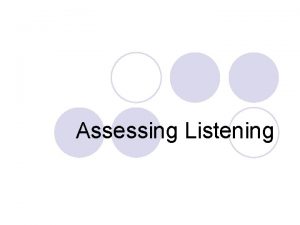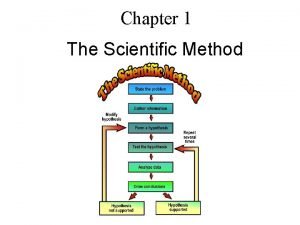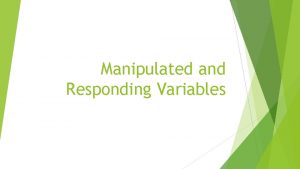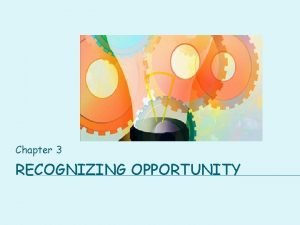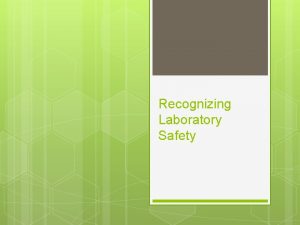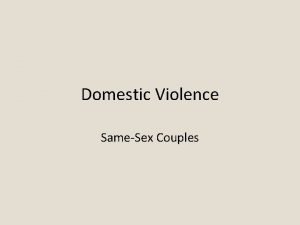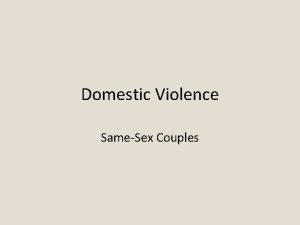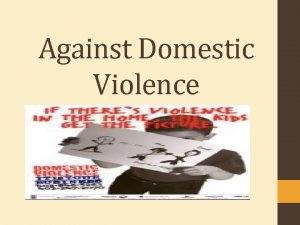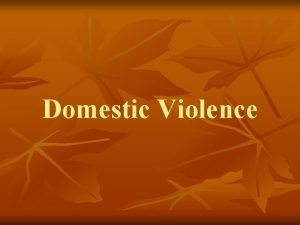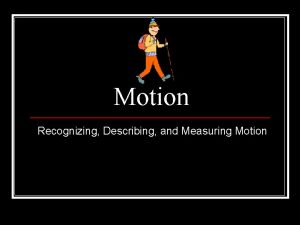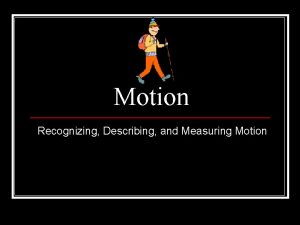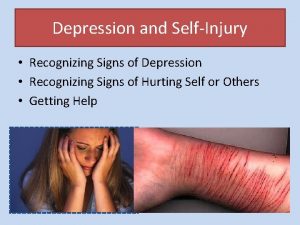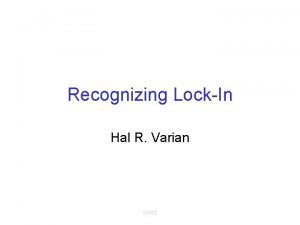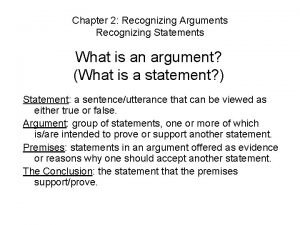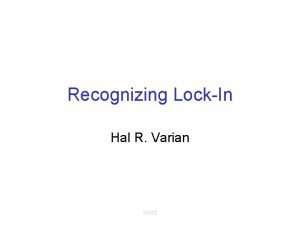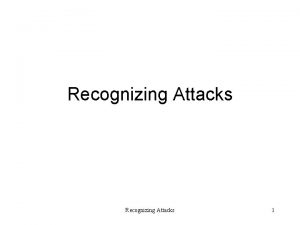RECOGNIZING AND RESPONDING RECOGNIZING AND RESPONDING TO DOMESTIC


















- Slides: 18

RECOGNIZING AND RESPONDING

RECOGNIZING AND RESPONDING TO DOMESTIC VIOLENCE HAVE THE CONVERSATION!

DOMESTIC VIOLENCE: THE DYNAMICS WHAT YOU NEED TO KNOW What is Domestic Violence? A pattern of power and coercive control used by one person over another person– including more behaviors than physical or sexual abuse – with consequences or harm experienced by the person who resists. This means. . . A survivor’s autonomy and safety is influenced by their experience and knowledge of the person causing harm. A survivor’s planning and choices have to anticipate an abusive person’s reaction and potential actions. A survivor’s community becomes smaller. . . Partners who cause harm typically isolate a survivor from their network of support and undermine their options. 3

9 THINGS TO KNOW ABOUT DV/SA Coercion and abuse is about power and control • Coercion and abuse is purposeful and intentional! • It can sometimes be difficult to figure out who is causing harm and who is the target of harm. • The fundamental harm of abuse is a loss of autonomy. 4

9 THINGS TO KNOW ABOUT DV/SA Survivor s are the EXPER TS Survivors are your best resource for figuring out what works and what doesn’t. 5

9 THINGS TO KNOW ABOUT DV/SA Abusers only use the amount of force necessary • They just use the amount needed to gain compliance in the relationship. • Any time we question a survivor’s story, it gives the abusive person even more power. 6

9 THINGS TO KNOW ABOUT DV/SA Past abuse MATTER S Impacts current decision-making of the survivor 7

9 THINGS TO KNOW ABOUT DV/SA Forced sex may be the only ABUSE May be the only physical abuse that someone experiences 8

9 THINGS TO KNOW ABOUT DV/SA NOT telling is not the same as LYING What is the benefit of telling you? 9

9 THINGS TO KNOW ABOUT DV/SA Survivor s have been surviving Before we met them; after they leave us 10

9 THINGS TO KNOW ABOUT DV/SA The best way to SUPPORT CHILDREN is to SUPPORT PARENTS Building resilience by supporting the parent and child together — to see them as linked. 11

9 THINGS TO KNOW ABOUT DV/SA Leaving doesn’t equal safety WSCADV Is having no option to leave making a decision to stay?

WHEN SURVIVORS COME TO YOUR PROGRAM Things to consider How to have a conversation about relationships Some survivors self-identify or are referred by DV agency Survivor and abuser may show up together How would you interview a couple? Ø Safety issues during intake or assessment How do you ask about relationships with a single person? Ø Have you recently experienced abuse (examples)? Ø Are you afraid of the person who harmed you? Ø Have you talked to a DV advocate? Would you like to? 13

WHEN SURVIVORS ENTER YOUR PROGRAM: A FEW PRACTICES TO AVOID Eligibility criteria - prevents access or increases dangers Requiring protection orders or a report to law enforcement Blaming a survivor for damage or danger caused by the abuser Expecting that a survivor can control another person’s behavior 14

IN YOUR PROGRAM: BOTH PEOPLE ENGAGE IN PHYSICAL VIOLENCE. . . ? Who is the survivor? Who is the person causing harm? You can’t rely on gender or a list of behaviors. Consider CONTEXT, INTENT, EFFECT to see who is establishing power and control over another person. o Who faces consequences or retaliation for resisting? Other strategies besides eviction 15

UNDERSTANDING THE SURVIVOR’S CONTACT WITH THE PERSON CAUSING HARM The survivor may have no choice § Child visitation § Primary childcare § Transportation § Access to money § Health care or disability needs § Uncertain legal status § Facing homelessness The survivor wants contact Hope for change Wants the relationship Parent of the children Emotional support Health care or disability needs Has a home 16

LISTEN DIFFERENTLY & BUILD BRIDGES Listen to the survivor and ask what they need and want If the person causing harm is present with the survivor - do not have decision-making or safety-related conversations Consider why a survivor may use violence—in self- defense, protect children or to regain control over their life Help bridge the relationship between the survivor and the DV program 17

CONFIDENTIALITY: HONOR IT! WHY? Survivors control over their information is key to autonomy and safety Legal protections Federal and state legal obligations for written and oral information Best practices for release of information Look for potential breaches of confidentiality in your program When in doubt? Ask the survivor – your expert! 18
 Useful material and harmful material
Useful material and harmful material Observing trends in entrepreneurship
Observing trends in entrepreneurship An opportunity has four essential qualities it is
An opportunity has four essential qualities it is Recognizing opportunities and generating ideas
Recognizing opportunities and generating ideas Recognizing and resolving abo discrepancies
Recognizing and resolving abo discrepancies The importance of listening in lang
The importance of listening in lang Recognizing opportunities and generating ideas
Recognizing opportunities and generating ideas Manipulated variable and responding variable graph
Manipulated variable and responding variable graph Why are line graphs powerful tools in science?
Why are line graphs powerful tools in science? Congratulation is an expression of
Congratulation is an expression of The fourth step in the scientific method is
The fourth step in the scientific method is What is a responding variable
What is a responding variable Making and responding to requests 2 bac
Making and responding to requests 2 bac Listening strategies
Listening strategies Chapter 3 recognizing opportunity
Chapter 3 recognizing opportunity Recognizing genre - argumentative text
Recognizing genre - argumentative text What is channel design?
What is channel design? Recognizing lab safety worksheet answer key
Recognizing lab safety worksheet answer key Entrepreneurial trends
Entrepreneurial trends





